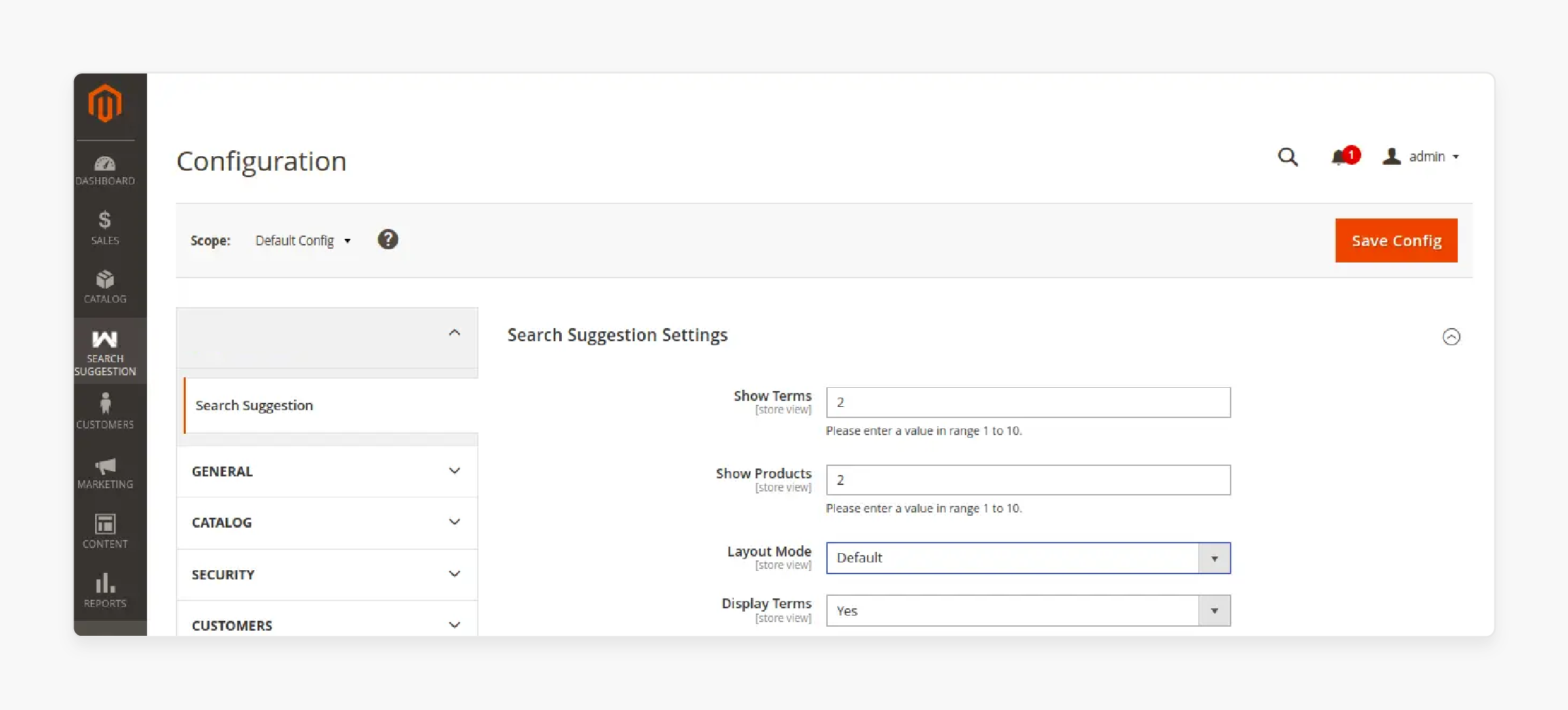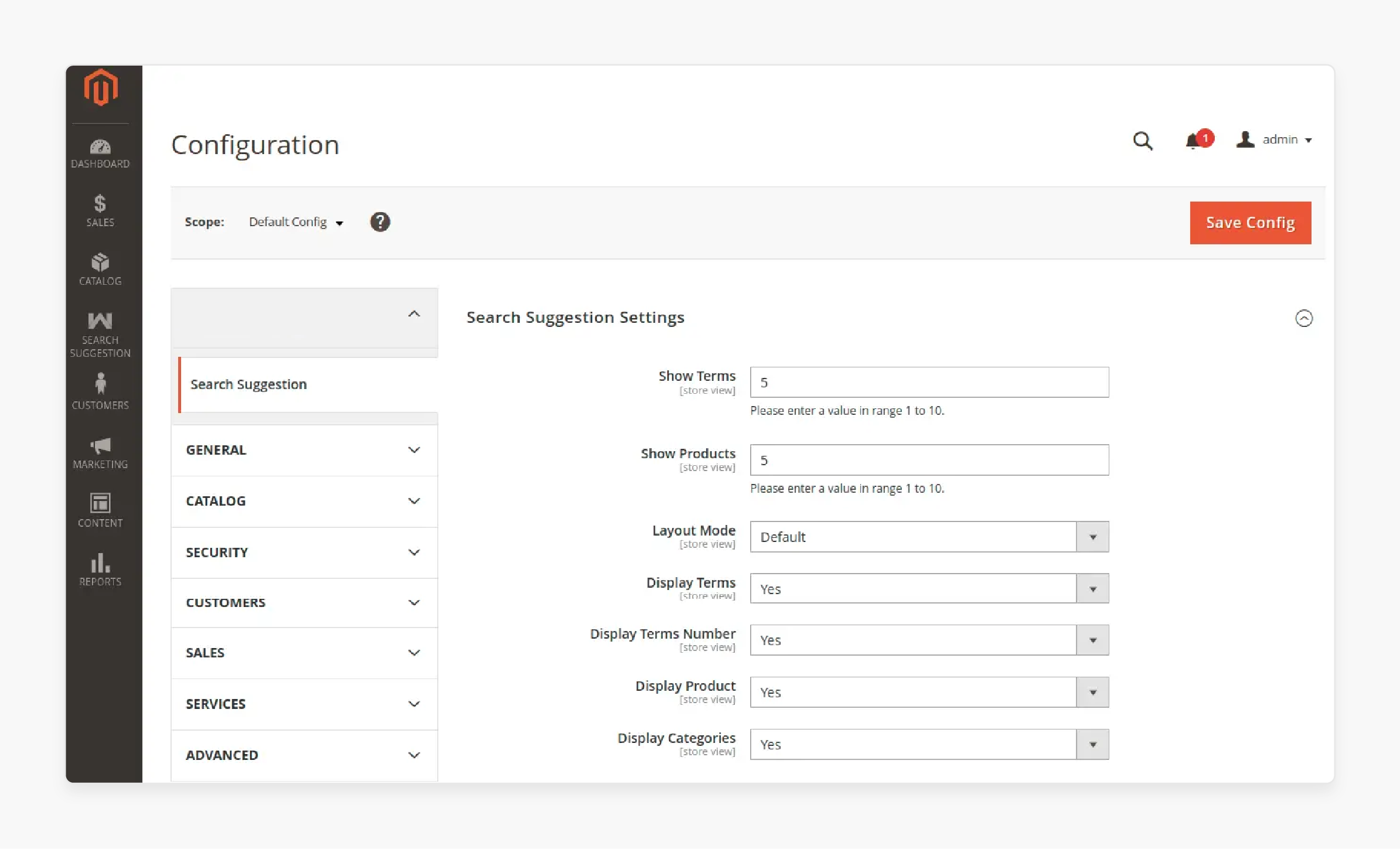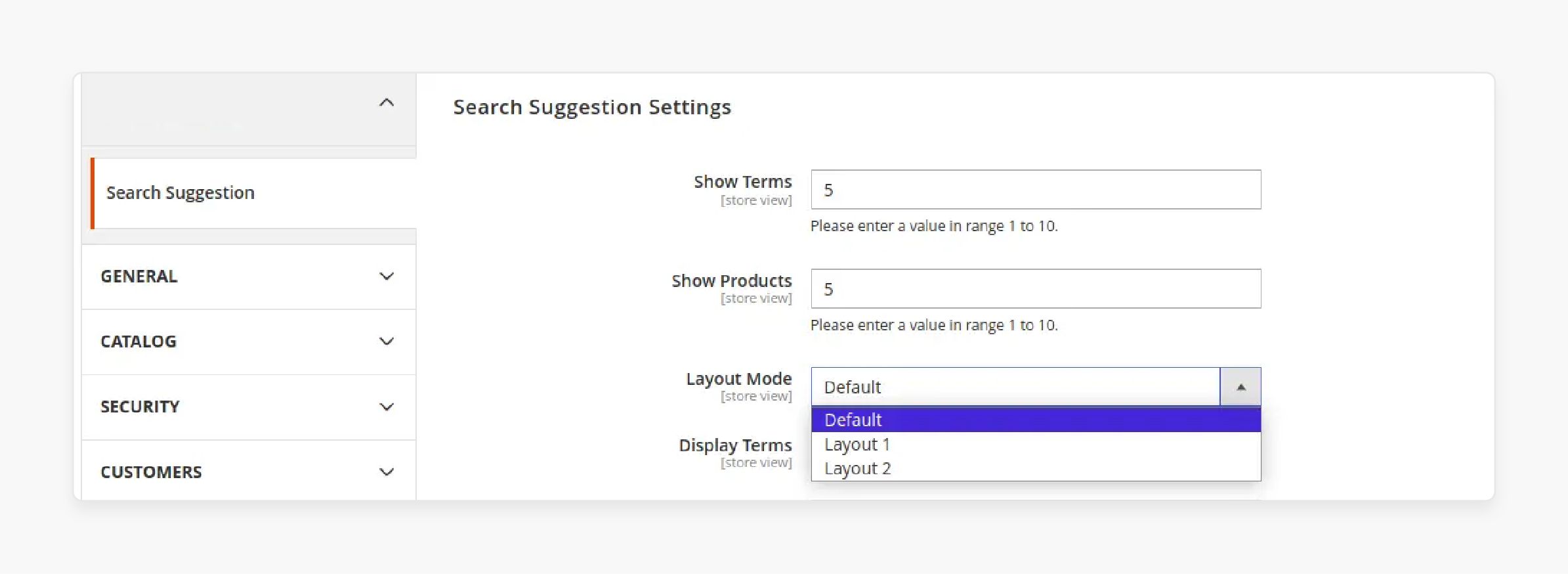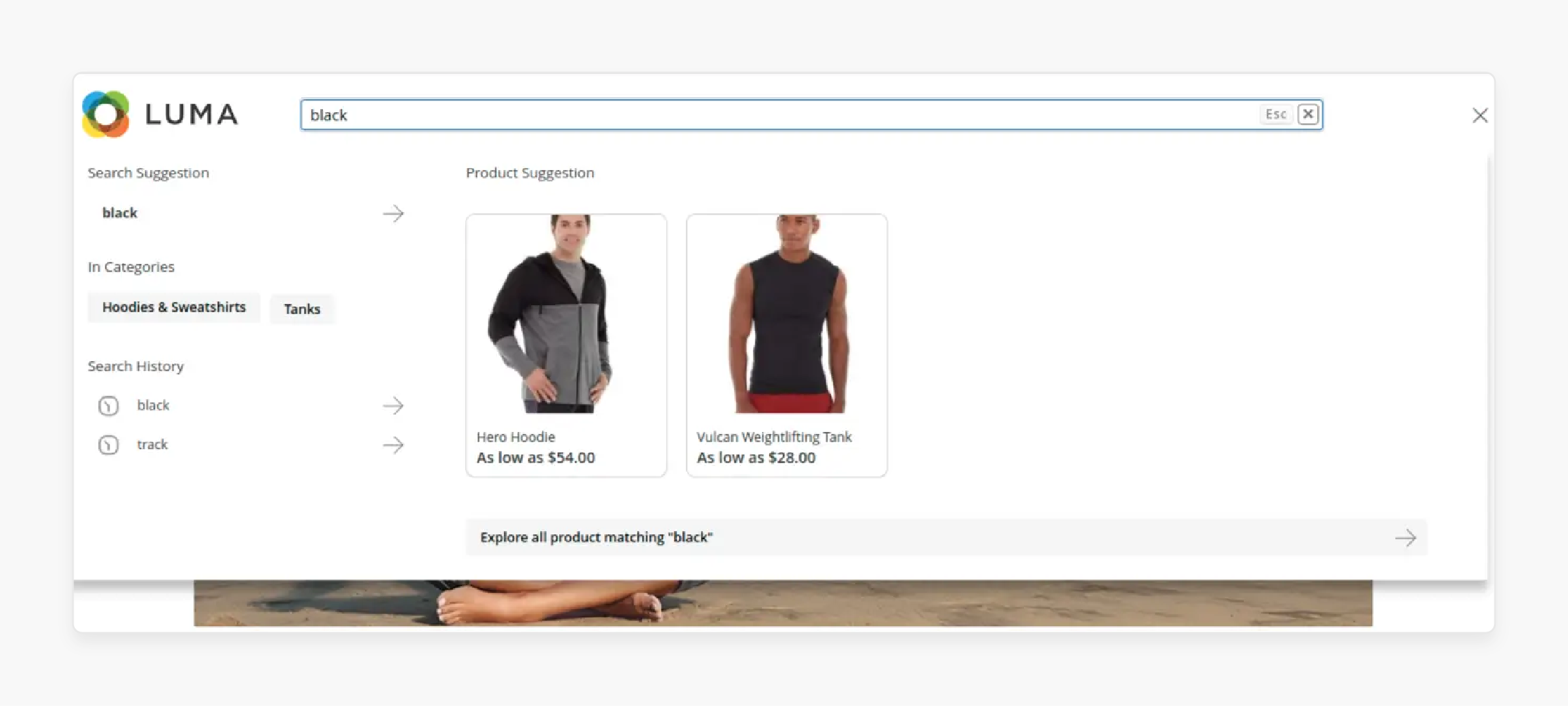
A Complete Guide To Configuring Magento 2 Search Results
Want to boost your online store's search performance? Magento 2 search results can improve your customers' ability to find products, leading to better conversion rates.
This tutorial will cover how to configure Magento 2 search results for better store visibility.
Key Takeaways
- Customization and optimization techniques to enhance customer experience with search extensions.
- Troubleshooting common issues to optimize settings for accurate results.
- Steps to configure Magento 2 search to improve customer satisfaction.
- Advanced search features and extensions to enhance the search experience.
- Regularly monitor search queries to optimize results.
- Tips for configuring advanced search features.
-
Enhance Magento Site Search Experience With Search Terms And Results
-
3 Steps To Configure Storefront View Of Adobe Commerce Search Engine Results
Features Of Magento 2 Advanced Search With Category Results
1. Category-Based Search Architecture

Transform your product catalog search into a conversion powerhouse by:
- Enabling multi-select category filtering
- Implementing dynamic attribute filtering
- Configuring custom search weights for categories
2. Smart Search Suggestions
Enhance your search suggestions with the following:
- Real-time display of popular search terms
- Automated spelling correction
- Predictive search queries based on user behavior
3. Product Attribute Management

Maximize search effectiveness by leveraging product attributes to:
- Assign custom weightage for product name matches
- Prioritize searchable attributes
- Apply dynamic attribute filtering based on search context
For instance, setting product name weight to "5" and description weight to "3" means that matches in the product name field will rank higher in search results than matches in the description.
4. Search Results Customization
Boost search efficiency with:
- Custom search result layouts
- Personalized product recommendations
- Use of search term synonyms for better matching
5. Performance Optimization
Optimize search performance for a seamless user experience by:
- Enabling search result caching
- Implementing partial word matching
- Optimizing indexing frequency
6. Advanced Analytics Integration
Track key metrics to enhance search performance by:
- Analyzing search term reports
- Monitoring zero-results queries
- Identifying search abandonment patterns
Enhance Magento Site Search Experience With Search Terms And Results
| Component | Features | Implementation Strategy | Impact on Search Results |
|---|---|---|---|
| Search Term Analysis | - Popular queries tracking - Zero results monitoring - Search pattern analysis |
- Regular report review - Term optimization - Synonym mapping |
- Better understanding of user intent - Reduced failed searches - Improved relevance |
| Live Search Integration | - Instant results - Autocomplete - Search suggestions |
- AJAX implementation - Elastic search setup - Mobile optimization |
- Faster response time - Enhanced user experience - Higher conversion rates |
| Search Extensions | - Advanced filtering - Custom relevance rules - Multi-language support |
- Extension selection - Custom configuration - Performance testing |
- Extended functionality - Better search accuracy - Broader language support |
| Results Optimization | - Attribute weighting - Category filtering - Product prioritization |
- Weight configuration - Category mapping - Product boosting rules |
- More relevant results - Better product discovery - Increased sales |
| Search Analytics | - Term frequency - Conversion tracking - Behavior analysis |
- Analytics setup - Data collection - Performance monitoring |
- Insight-driven decisions - Continuous improvement - ROI tracking |
| Mobile Experience | - Responsive design - Touch-friendly interface - Quick view options |
- Mobile-first approach - UI optimization - Performance tuning |
- Better mobile engagement - Reduced bounce rates - Higher mobile conversions |
| Performance Metrics | - Response time - Result accuracy - User satisfaction |
- Speed monitoring - Quality checks - User feedback |
- Faster search experience - Better user satisfaction - Increased retention |
How To Configure Search Results Page In Magento 2?
- Go to System > Search Management > Settings > Search. It is divided into the following sections:
- Search Engine Configuration
- Search Settings
- Multi-store Search Result
The Search Engine option lets you choose between the following:
- MySQL: The native Magento engine.
- Built-in search engine: Uses an internal search algorithm of Magento 2 Search Extension.
Note: You are not required to install the Sphinx Engine. However, the search speed may be slower for more than "20,000 products".
- External Sphinx engine: Allows the use of Sphinx Engine on a dedicated server or the same server as your store. This option provides additional settings for configuring the Sphinx Daemon, including:
- Sphinx Host: Defines the host for the Sphinx daemon (default is "localhost").
- Sphinx Port: Sets the port for the Sphinx daemon.
- Sphinx installed on the same server:
i. No: Indicates that Sphinx runs on a separate server. It triggers the option to generate a configuration file. ii. Yes: Indicates that Sphinx is on the same server. It provides additional options to manage the daemon: a. Sphinx Bin Path: Defines the location of the Sphinx daemon. b. Allow auto-start Sphinx Daemon: Allows the daemon to start with the Magento store. c. Check Status: Button to view the current status of the daemon. d. Restart Sphinx Daemon: Button to restart the daemon from the Magento configuration panel. e. Reset: Button to reset the current search task of the daemon.
Note: Before choosing the External Sphinx engine, you need to install the Sphinx Search Engine manually.
The Additional Configuration section appears if you select the External Sphinx engine. It allows fine-tuning of the Sphinx configuration file with settings such as:
-
Custom Base Path: Defines a custom path to Sphinx if it wasn't installed in the default
[magento_root_directory]/var/sphinx/location. - Additional search configuration: Allows adding parameters to the Sphinx Daemon.
- Additional index configuration: Allows adding settings to the Sphinx index.
- Custom Charset Table: Allows adding character sets to the Sphinx configuration file.
Check the example below for the 'Search Settings' configuration:
-
Wildcard search: Allows customers to search using a partial word, with different modes:
- Enabled (word): Fully enables wildcards.
- Enabled at end (word): Allows searching using the beginning part of the keyword.
- Enabled at start (word): Allows searching using the ending part of the keyword.
- Disabled: Disables wildcards.
-
Note: Enabling wildcards may reduce search relevance and increase the number of results.
-
Enable redirect from 404 to search results: Redirects broken URLs to the search results page.
-
Redirect if there is a single result: If the search returns only one match, users are taken directly to the product page.
-
Enable Google Sitelinks Search: Displays the "Sitelink Search Box" on the Google search results page after reindexing.
-
Enable search terms highlighting: Highlights search query words in the results.
-
Display related search terms: Shows related search terms on the search results page.
-
Max number of items in the result: Sets the maximum number of items in the search result. Set to "0" to disable the limit.
-
Wildcard Exceptions: Defines keywords where wildcards cannot be applied.
-
Replace words in search query: Defines words to replace automatically in search queries.
-
Not' words: Words that invert the search, excluding results with that word.
-
Long Tail Expressions: Handles words with dashes or other non-alphabetic symbols. It is used to improve search accuracy.
-
Minimum number of characters to search: Sets the minimum number of characters. It is used to trigger the autocomplete drop-down.
-
Match mode: Sets the search mode:
- AND: Matches only when all keywords are found.
- OR: Matches when at least one keyword is found.
Customizing Magento Product Search Layout Page
| Layout Element | Customization Options | Impact on Search Results |
|---|---|---|
| Search Bar Placement | - Header (default) - Floating - Sticky top - Side panel |
Affects the visibility and accessibility of the search function. |
| Results Grid Layout | - List view - Grid view - Compact view - Gallery view |
Determines how many search results are displayed per page. |
| Filter Position | - Left sidebar - Top bar - Collapsible panels - Modal overlay |
Influences how users refine their search results. |
| Product Cards | - Image size - Info display - Quick view - Add to cart button |
Impacts conversion rate from search results. |
| Loading States | - Skeleton screens - Progressive loading - Infinite scroll - Pagination |
Affects perceived search speed and user experience. |
| Mobile Optimization | - Responsive design - Touch-friendly filters - Swipe gestures - Collapsed filters |
Vital for the mobile search experience. |
| Search Analytics | - Results count - Popular terms - Zero results tracking - Search abandonment |
Helps optimize search performance. |
| Custom Features | - Auto-complete - Voice search - Image search - Category suggestions |
Enhances search functionality. |
| Performance Elements | - Lazy loading - Image optimization - Cache management - AJAX updates |
Improves search results load time. |
| SEO Components | - Rich snippets - Structured data - Canonical URLs - Meta descriptions |
Boosts search engine visibility. |
3 Steps To Configure Storefront View Of Adobe Commerce Search Engine Results
- Navigate to Stores > Configuration.
- Select 'Search Suggestion'.
- Also, you can go to Store > Search Suggestion from the side panel 'Settings'.

The admin can configure various settings for search suggestions, such as:
- Show terms
- Show products
- Display products
- Display categories
- Number of products

Check the Module Configuration options below:
i. Show Options
- Show Terms: Set the number of terms to display in the search suggestions.
- Show Products: Set the number of products to display in the search suggestions.
ii. Display Options
- Display Terms: Choose whether to display terms ("Yes"/"No").
- Display Terms Number: Set whether to display the number of terms ("Yes"/"No").
- Display Products: Set whether to display products ("Yes"/"No").
- Display Categories: Choose whether to display categories ("Yes"/"No").
iii. Layout Options
The admin can select the layout for the frontend:
- Default: Set the default search option for the frontend.
- Layout 1 (Fixed Width): Displays search suggestions in a vertical layout.
- Layout 2 (Full Width): Displays search suggestions in a horizontal layout.

For enhanced search results, you can also install the Magento 2 Layered Navigation Extension.
iv. Storefront View
Search suggestions will appear on the frontend based on the admin's configuration.
In the search bar, customers can input product keywords. Relevant suggestions will be displayed accordingly.

a. Layout 1 (Fixed Width)
- When the admin sets Layout 1, the frontend will display as shown below.
- If the customer clicks on the search bar without entering any keywords, popular products will be displayed based on ratings.

b. Layout 2 (Full Width)
- This layout differs slightly from Layout 1. The search bar appears differently.
- When the customer clicks the search bar, trending categories are displayed horizontally.
- After entering a keyword, relevant product categories and product options are displayed accordingly.

Optimizing Magento Search Results Performance
| Component | Implementation Strategy | Performance Impact |
|---|---|---|
| Caching | - Cache top search queries - Full-page caching for results - Redis integration |
- Instant results delivery - Reduced server load - Improved response time |
| Search Engine | - MySQL ("<50k" products) - Elasticsearch (large catalogs) - Sphinx (custom algorithms) |
- Optimized query processing - Better scalability - Custom search logic support |
| Indexing | - Off-peak scheduling - Partial indexing - Attribute weight optimization |
- Reduced server strain - Real-time updates - Better relevance |
| Performance | - Search suggestion limits - Lazy loading - AJAX updates |
- Faster initial load - Better resource usage - Smooth user experience |
| Extensions | - Advanced filtering - Analytics integration - Custom scoring |
- Enhanced functionality - Better insights - Improved relevance |
| Query | - Complex query splitting - Fallback patterns - Match parameters |
- Better query handling - Reduced failed searches - More accurate results |
| Monitoring | - Response time tracking - Zero-result monitoring - Search term analysis |
- Performance insights - Issue identification - Continuous improvement |
Strategies To Improve Store Search Results In Magento 2
Step 1: Enhancing Search Speed
If you've already set up catalog search but are facing speed issues, it's essential to enhance it. A fast-loading Magento site significantly impacts both user experience and conversion rates. Depending on your store's search type, here are the measures you can take:
i. MySQL Search

MySQL is used as the default search option in Magento up to version 2.4. MySQL might suffice for small or low-traffic stores. However, performance issues can arise in larger setups. Here are key areas to optimize:
-
Code Issues: Sometimes, inefficient code, like unnecessary table joins, can slow down searches. Developers should optimize the code & use profilers to identify and improve problematic sections.
-
Database Overload: High traffic can overwhelm MySQL, leading to slower searches. Offloading the search to a service like Elasticsearch can help. For older Magento versions, Elasticsearch can be integrated via extensions.
For instance, when a customer searches for an 'organic cotton t-shirt', Elasticsearch can instantly look up matching products without querying the main database. It reduces server load. It also delivers results up to 10x faster than MySQL for stores with over "50,000 products".
ii. Elasticsearch

From version 2.4, Magento uses Elasticsearch as the default search option. This is because it is faster and more flexible. It offloads search functions from MySQL, optimizing overall page speed. Elasticsearch is often set up on a separate server to preserve resources, for example:
-
Rendering Delays: Sometimes product data isn't stored entirely in Elasticsearch, causing delays. Storing all static data in Elasticsearch can reduce the number of queries and improve speed.
-
Incorrect Queries and Data Display: Optimize query structure & ensure necessary data is displayed. For example, limiting the initial number of displayed products can improve performance.
-
Server Configuration: Host Elasticsearch on a separate server within the same local network as your main server. It helps to avoid resource conflicts and improve speed.
iii. Third-Party Search Tools

Many SaaS-based search tools are available. Each offers unique features like smart search, customization, and scalability. Here are a few examples:
-
Algolia: Uses machine learning and natural language processing for precise results. It supports voice search and offers high-speed searches through a distributed network.
-
Searchspring: Focuses on live indexing and semantic search. It allows advanced merchandising possibilities.
-
Sooqr and Klevu: Both tools enhance Magento search relevance using advanced algorithms.
Step 2: Improving Search Relevance
For more accurate search results, adopt more agile search services. For example, Elasticsearch or a third-party tool. Here's what affects search relevance:
- Attributes and Weight: Assign proper priorities to product attributes to improve relevance. For example, names and descriptions.

-
Search Types: Elasticsearch defaults to "Fulltext" searches. It offers more precise results than MySQL's "Like" search.
-
Autocomplete Search: Configure Elasticsearch's fuzzy search carefully to avoid incorrect suggestions.

- Synonyms and Redirects: Add synonyms, alternate word forms, & direct links for popular queries. It helps to improve the user experience.

Step 3: Enhancing User Experience
The usability of the search functionality is as important as its speed and relevance. Improving Magento 2 search usability can be achieved by implementing the best UX/UI practices. For example, adding a prominent search bar or organizing fast search results effectively.
Troubleshooting Common Magento 2 Instant Search Issues
| Issue Category | Common Problems | Solutions | Impact on Search Results |
|---|---|---|---|
| Cache Issues | - Stale search results - Outdated product data - Inconsistent pricing |
- Flush Magento cache. - Clear browser cache. - Reset indexers. |
- Fresh search results - Updated product info - Accurate pricing |
| Configuration Problems | - Wrong query length settings - Disabled suggestions - Incorrect search engine selection |
- Set minimal query length to "1". - Enable search suggestions. - Verify search engine settings. |
- Better search accuracy - Enhanced user experience - Faster results |
| Indexing Errors | - Invalid index status - Stuck indexers - Partial indexing |
- Reindex catalog data. - Reset stuck indexers. - Schedule off-peak indexing. |
- Up-to-date results - Consistent search - Better performance |
| Search Engine Conflicts | - Elasticsearch issues - MySQL conflicts - Extension incompatibilities |
- Verify engine configuration. - Check for conflicts. - Update extensions. |
- Proper engine function - Resolved conflicts - Compatible systems |
| Performance Issues | - Slow search response - High server load - Poor rendering |
- Optimize server resources. - Implement caching. - Monitor performance. |
- Faster searches - Better server response - Smooth experience |
| Display Problems | - Missing products - Wrong result count - Layout issues |
- Check template files. - Verify result settings. - Update theme files. |
- Accurate displays - Correct counts - Clean layout |
| Search Term Issues | - No results found - Irrelevant results - Missing synonyms |
- Add search synonyms. - Configure relevance. - Update search terms. |
- Better relevance - More accurate results - Improved matches |
FAQs
1. How can I customize the number of search results and search recommendations shown to customers?
Through the Magento admin panel, you can adjust your search configuration. Control both the quantity of results displayed & the type of search recommendations shown. This search solution helps optimize the shopping experience. It balances comprehensive product discovery with manageable result displays.
2. How does caching affect the speed and accuracy of search results?
When a customer searches in Magento, the system uses cached data from Magento. You can quickly display the number of top search results to cache. It helps you improve response times. The platform automatically determines the optimal show results count based on search patterns. It ensures fast and relevant results without compromising accuracy.
3. How does Magento determine the relevance of search results when customers type in your online store's search?
The search process evaluates multiple factors. For example, the number of characters for search and how closely the caches all search terms match product data. Results based on this analysis are then ranked by relevance. It ensures customers find the most appropriate products first.
4. How many search suggestions appear when customers type in the search box?
The MySQL search engine generates a customizable search suggestions count. It displays the results count for each recommendation in real-time. Configure additional search suggestions to provide helpful options and maintain fast response times.
5. How can I ensure customers see the most relevant search results?
The best Magento features include the ability to search intelligently. It shows the number of results found for each recommendation. Thus, it helps customers make informed decisions.
6. How can I fix poor search performance and improve results for users in my Magento store?
Magento 2 provides powerful optimization options through Magento 2 Elasticsearch. It significantly improves search accuracy and speed. Optimize the search settings and implement Elasticsearch. Transform a poor search experience into a responsive system that delivers precise results.
7. How does Magento advanced search enhance the way customers search for products?
When a customer enters a keyword in the search, Magento 2 Catalog Search processes it through multiple criteria. Thus, it delivers comprehensive search query results. This advanced functionality helps customers find exactly what they need. It enables you to search across product attributes, descriptions, and categories simultaneously.
Summary
Magento 2 Search Results adapt to customer behavior, ensuring the most correct search results appear first. It helps:
- Enhance the user experience and drive conversions.
- Optimize search settings, which can lead to better conversion rates.
- Enhance search experience and search optimization.
- Transform how customers discover products in your Magento 2 store.
- Implement advanced search features and boost conversion rates.
Optimize search results for better conversions with Magento hosting services.




